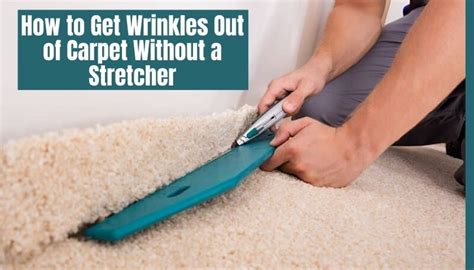Carpet Repair Simplified: No Stretcher Needed
Tired of unsightly carpet damage? Don't want the hassle and expense of professional repair, or the complicated process of using a carpet stretcher? You're in luck! Many common carpet issues can be fixed effectively at home without the need for specialized tools. This guide will walk you through simple, effective carpet repair techniques, saving you time, money, and frustration.
Why Skip the Stretcher?
Carpet stretchers are valuable tools for professional carpet installers, addressing significant wrinkles, ripples, and stretching issues across large areas. However, for small, localized damage – like small burns, cuts, or seams that have come undone – a stretcher is often overkill. Using simpler methods allows for quicker, easier repairs with materials you likely already have at home.
Common Carpet Problems and Their No-Stretcher Solutions
Here are some common carpet problems you can easily fix without a carpet stretcher:
H2: How to Repair Small Carpet Burns?
Small burns often leave behind scorched fibers, leaving a noticeable mark. While completely restoring the carpet to its original state may be impossible, you can significantly minimize the appearance of the damage. Gently trim away any excessively charred fibers with sharp scissors. Use a stiff-bristled brush to tease the surrounding fibers and help blend the area. For deeper burns, consider using a similar-colored carpet fiber repair kit (available at most home improvement stores) to fill in the damaged area. These kits often come with a special adhesive and fibers designed to match your carpet.
H2: How to Fix Small Carpet Cuts?
Small, clean cuts can often be repaired using carpet tape. Clean the edges of the cut thoroughly to remove any debris. Apply strong carpet tape underneath the cut, carefully aligning the edges. Press firmly to ensure a strong bond. For larger cuts, or cuts with frayed edges, you may need to use a patching method (detailed below).
H2: How to Repair Separated Carpet Seams?
Loose or separated carpet seams are a common problem, particularly in high-traffic areas. Start by carefully cleaning the seam to remove dust and debris. Apply a strong adhesive specifically designed for carpet seams (avoid using general-purpose adhesives, as they may damage the carpet fibers). Press firmly and leave it undisturbed for the recommended drying time, ensuring the adhesive is fully set before walking on the area.
H2: How to Patch a Carpet Hole?
For larger holes or more significant damage, a patch is necessary. Find a piece of scrap carpet that closely matches your existing carpet in both color and texture. Cut a patch slightly larger than the hole. Use a strong adhesive designed for carpet, applying it to both the patch and the area surrounding the hole. Carefully position the patch, pressing it firmly into place, ensuring even adhesion. For a more seamless look, consider using fabric glue, which offers a more flexible and less noticeable bond than some carpet adhesives. Trim away any excess patch material carefully with a sharp blade once the adhesive has fully set.
H2: What materials do I need for carpet repair?
The specific materials you'll need depend on the type of damage you're repairing, but generally, you might need:
- Sharp scissors: For trimming damaged fibers or excess patching material.
- Stiff-bristled brush: To help blend repaired areas and tease fibers.
- Carpet tape: For fixing small cuts and seams.
- Carpet adhesive: For repairing seams and applying patches.
- Scrap carpet (for patching): Ideally a piece from a less visible area of the same carpet.
- Carpet repair kit (optional): Contains matching fibers and adhesive for filling in burns or holes.
When to Call a Professional
While many minor repairs can be handled at home, some situations require professional intervention:
- Extensive damage: Large tears, rips, or significant areas of wear and tear.
- Water damage: Mold or mildew growth needs professional cleaning and potentially carpet replacement.
- Uneven flooring: Underlying flooring problems that cause carpet ripples or bulging require addressing before repair.
By following these simple steps, you can effectively repair minor carpet damage without the need for a carpet stretcher, saving both time and money. Remember, prevention is key! Regular vacuuming and prompt attention to spills can help minimize the need for repairs in the future.

